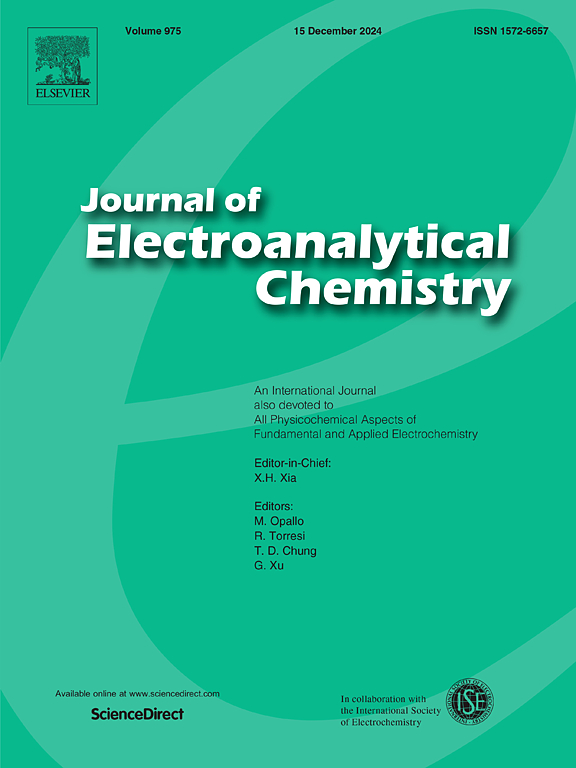Platinum-nickel bimetallic nanowire electrocatalyst enables methanol oxidation
IF 4.1
3区 化学
Q1 CHEMISTRY, ANALYTICAL
引用次数: 0
Abstract
The direct methanol fuel cells (DMFCs) stand out among various types of fuel cells due to their advantages of pollution-free operation, rational design, and high energy density. However, the development of methanol fuel cells faces several obstacles. Platinum-based catalysts are considered the most promising type of catalyst for electrochemical methanol oxidation reaction (MOR), yet they are limited by issues inherent to commercial platinum–carbon (Pt/C) catalysts, including high platinum content, low activity, rapid deactivation, and susceptibility to poisoning, all of which restrict their practical applications in methanol oxidation cells. Based on the platinum-based metal system, this study explores a platinum-nickel (PtNi) bimetallic nanomaterial with a nanowire microstructure as an alternative catalyst for MOR. The PtNi nanowires possess more active sites and exhibit synergistic effects, thereby enhancing catalytic performance.

求助全文
约1分钟内获得全文
求助全文
来源期刊
CiteScore
7.80
自引率
6.70%
发文量
912
审稿时长
2.4 months
期刊介绍:
The Journal of Electroanalytical Chemistry is the foremost international journal devoted to the interdisciplinary subject of electrochemistry in all its aspects, theoretical as well as applied.
Electrochemistry is a wide ranging area that is in a state of continuous evolution. Rather than compiling a long list of topics covered by the Journal, the editors would like to draw particular attention to the key issues of novelty, topicality and quality. Papers should present new and interesting electrochemical science in a way that is accessible to the reader. The presentation and discussion should be at a level that is consistent with the international status of the Journal. Reports describing the application of well-established techniques to problems that are essentially technical will not be accepted. Similarly, papers that report observations but fail to provide adequate interpretation will be rejected by the Editors. Papers dealing with technical electrochemistry should be submitted to other specialist journals unless the authors can show that their work provides substantially new insights into electrochemical processes.
文献相关原料
公司名称
产品信息
阿拉丁
Tungsten hexacarbonyl
阿拉丁
oleylamine
阿拉丁
nickel (II) acetylacetonate
阿拉丁
methanol
阿拉丁
cetyltrimethylammonium bromide
阿拉丁
Platinum (II) acetylacetonate

 求助内容:
求助内容: 应助结果提醒方式:
应助结果提醒方式:


